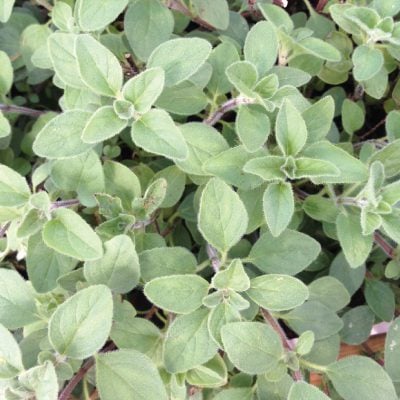
Learning Download: How to Grow Oregano
From Seed to Harvest: A beginner’s guide to growing oregano
Oregano is a very popular, strong-flavored herb generally used for flavoring meats and Italian dishes. It is a hardy perennial. Oregano has a very strong flavor, so only a little should be used at a time. Oregano is a member of the mint family and comes in many different varieties that have slightly different flavors, such as Greek, Italian and Turkish oregano. For lighter flavors, marjoram is similar to oregano. Like most herbs, oregano can be grown indoors or out in the garden. Oregano is a native to hot and dry regions, which makes the herb grow in places where drought is eminent.
To plant:
Plant seeds indoor before the last frost date, as early as February. Similar to marjoram, oregano seeds are dust-like and fragile. Do not bury them in soil but distribute them evenly across the top of the soil and mist with water. Cover the seed tray with a plastic dome and place in a sunny window. Oregano also can be grown from plant cuttings and mature root division.
To grow:
Once the dangers of frost have passed, transplant seedlings to the garden.Thin seedlings to 12 inches apart when they reach 6 inches in height. When transplanting, plant the seedlings in a sunny, well-drained area. Oregano can grow in soils with a pH of 6.0 to 9.0 but prefers soils with a pH of 6.0 to 8.0. Once the plant has been established, it requires little care. Only water oregano during long dry periods. Apply hay as mulch around the plants.
Oregano can reach 18 inches well and continuous harvesting encourages more growth. Once plants flower, cut them back to prevent them from growing leggy. After its growing season, cut oregano down to the ground and cover with mulch. If oregano is growing in a container, bring the container indoors to continue growth throughout the winter.
Because of its strong scent, oregano acts as a natural insect repellent. This makes it a great companion plant for beans and broccoli. Despite its insect repelling qualities, oregano can be susceptible to spider mite, whitefly and powdery mildew.
To harvest:
Once oregano reaches 4 to 6 inches tall, it is ready to harvest. Harvest the leaves as needed throughout its growing season. To yield the best flavor, harvest the oregano as the plant’s flowers begin to bud. Harvest by pinching off individual leaves or clipping an entire branch. The leaves can be dried or frozen but store them away from direct light.
What oregano craves:
Oregano is a very hardy plant that doesn’t require fertilization. If you choose to fertilize the plant, do so lightly as not to damage it. However, oregano can grow in poor, dry conditions and doesn’t need fertilizer to produce its flavorful leaves.
Where to buy oregano seeds:
You can find oregano seeds at Urban Farmer.

